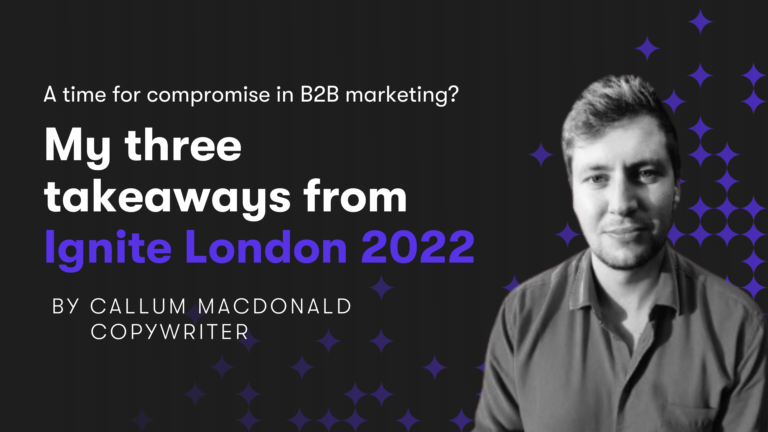Five takeaways from Gartner Symposium Barcelona 2022
"One thing is clear - we’re moving from the era of the digital enterprise into an era of the automated enterprise."
My mind wonders with thoughts of our future, following three days at the Gartner 2022 Symposium in Barcelona. It was a truly eye-opening experience and an opportunity to step into the shoes of a CIO and explore the key macro and micro topics impacting, and likely to impact, their agendas in the coming months and years.
They range from boardroom concerns over spiraling inflation and sustainable performance, to how Robotic Process Automation is driving the transformation of business units and how data literacy will become imperative for employees and society as a whole.
It was an event with so much to see and learn – but my top five takeaways are:
Growth
Albeit still the #1 CEO priority, growth is being diluted as a focus from 51% last year to 39% this year, due to a combination of factors including spiraling inflation and the cost of living, the talent crisis, and a re-globalization of supply chains due to major shifts between nations. The pressure on CIOs is to deliver more with less whilst supporting the organization to pivot in uncertain times, requiring a level of agility not seen since the pandemic.
Metaverse
It’s clear there’s already a lot of fatigue in the CIO community over this term, with many feeling it’s overhyped. Interesting discussions did crop up about how it can be monetized and the cross-over with Web3.0 and tokenization. For example, one large ERP vendor is working with a leading fashion house to enable consumers to be rewarded with digital tokens when spending in the real world, enabling them to drive consumer adoption for their brand in the metaverse; an interesting promotional angle that could apply to a broad range of industries and B2B use cases. I wonder at what point ‘token’ Marketing Development Funds will start to be issued.
Customer Digital Twin
Most of us in the marketing community have heard of Customer 360, the ability to centralize customer data to have a master record for use across the organization. Well, the next iteration in this field is centered on emulating and predicting customer behavior. The core difference is the ability to curate customer experience in a specific context. So how does this work in practice? Well, imagine taking a trip on the underground and the ad unit delivering a personalized experience following your earlier purchase in a retail store, designed to foster brand advocacy. Or your coffee barista asking you which of your usual drinks you may like, taking the guesswork out of the seemingly ever-increasing number of options. The trick great brands will need to navigate is maintaining these positive experiences, as they will become the expected behavior.
Weaponizing privacy
Most organizations see privacy legislation as a set of rules and procedures they need to adhere to, and they are. However, they can also be used as a competitive advantage in the right context to drive strategic business value. For example, Apple limited targeted advertising on iOS in June 2020, taking $16B in projected ad revenue off the table from the likes of Meta and YouTube and enabling them to become the #1 ad network for mobile marketers on iPhone and iPad. Another example relates to how Google intends to crumble the cookie! How does this benefit them? Well, they hold the first-party data from Search and YouTube, so they don’t really need cookies. What this enables them to do though is stir up the advertising marketplace, all $491B of it, enabling them to take an even larger slice of the pie whilst the rest of the industry grapples with how to undertake online advertising without cookies.
Contextual Learning
In 2013 it was revealed that 90% of the world’s data was generated over the last two years. I dread to think about where we are today. But isn’t too much data a good thing? Apparently not for Machine Learning, which will probably come as a bit of a surprise. Data certainly increases the accuracy of the ML model, however infinite data can’t make it more accurate. What can help is context, and this is where graph analytics comes into its own, with the potential to improve ML by 20%. The analogy that really struck me was how many pictures of a cow do you need to funnel into ML before it knows what a cow is, compared to a kid seeing a cow in a field for the first time and knowing what all cows look like regardless of the color or number of spots!
So there you have it, my top 5 takeaways from the Gartner 2022 Symposium. It only covers a fraction of the insights revealed by industry leaders, but one thing is clear – we’re moving from the era of the digital enterprise into an era of the automated enterprise, with humans paired with AI-driven insights and automation across all lines of business to support their day-to-day operations, all of which increases the mandate for data literacy.
Interested in working with Strategic Leaders like Marcus? Contact Just Global.

Rob Omodiagbe discusses creativity in B2B at Cannes Lions 2022

Just Global Copywriter, Callum Macdonald, shares his three biggest takeaways after attending B2B Marketing’s Ignite London 2022.

Issued in November 2019, our agency published research that looked at the rise of the self-educating buyer and the impact this was having on B2B marketing.

